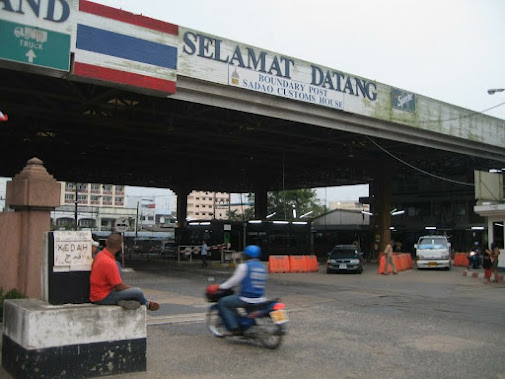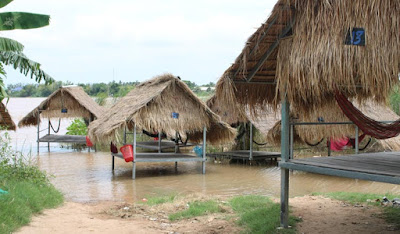With the introduction of technology in developing countries, many professionals have had to change the way they cater to customers. In Phnom Penh (Cambodia), photographers express their woes regarding the introduction of smartphones. However, many tourist photographers remain hopeful that their profession will stand the test of time.
At around 1pm, under a sunny sky, street photographer Heng Leng prints out pictures he has taken of some tourists from his portable printer in front of the Royal Palace.
Local and international tourists usually visit the Royal Palace around this time to enjoy the scenery while the sun is shining and the air is cool. Some tourists tend to take their own photographs, while others enlist the services of photographers such as Mr Leng.
The 60-year-old Phnom Penh resident says demands for his services have plummeted after technology has made it easier for people to take photos.
“Due to the digital era and with people using their smartphones to take photographs, we face challenges such as the reduction of our income, but Royal Palace photographers will not be losing,” Mr Leng says.
With rising technological challenges, it is not clear whether tourist photographers are able to sustain their profession and their livelihoods, especially when young Cambodians are now able to take selfies.
Mr Leng says most of his customers are local tourists from the provinces.
.
.
“There are challenging issue now because it’s not like the time when people had no smartphones, like when people had Nokia phones without a camera. Back then we were able to earn a lot of income,” he says. “However, the trade itself will not be lost because we have side jobs as wedding and ceremony photographers.”
“Even if everyone owns a smartphone, they will not be able to take moving photos of couples and children,” he adds. “We are only worried about our reduced income. The job of a photographer will never disappear.”
Almost every day, Mr Leng stands in front of the Royal Palace on Sisowath Quay boulevard, along the riverside. Here he smiles upon incoming travellers, speaks to people who stop by and take their pictures.
He says a nice photo of tourists in front of the Royal Palace can earn him up to $2.50. Per month, Mr Leng says he can earn up to $500.
“Sometimes, if there’s a big event like the Water Festival, or a graduation ceremony, I can earn up to between $50 and $100 per day,” he says.
According to a report by Open Institution, an NGO that focuses on tech development, in 2016, 96 percent of Cambodians had their own phones, with more than 99 percent were able to be reached with a device. In its report, the NGO says the proportion of citizens using more than one phone was 13 percent, while one in four uses more than one service provider.
The data in the report also shows that Cambodians are becoming more and more tech-savvy when it comes to their smartphones.
In its 2015 report, 76 percent of Cambodians own phones with Khmer script features. The number jumped by 21 percent when compared to the previous year.
According to the 2016 report, 48 percent of Cambodians had access to the internet, and that five out of six people had Facebook accounts. It noted that only three percent of Cambodians accessed Facebook solely through their computers, while 80 percent accessed Facebook exclusively on their phones.
To 30 percent of responders, Facebook became the most important source of information, surpassing TV and almost doubling radio.
According to Open Institution’s 2016 report, smartphone penetration of the market began in 2013. Before long, smartphone users became a vast majority of people who accessed the internet. By 2015, a third of Cambodia’s population was accessing information on the internet mostly via their smartphones.
“Phones have also become an important communication and service-provision tool for civil society organisations and government agencies,” the report said.
Back at the Royal Palace, Mr Leng is taking a photo of a beautiful family hailing from Kandal province. The father, 30-year-old Sun Lyna, says there are now more photographers in offering their services, despite the high number of people who now own a smartphone.
“Even if there are a lot of smartphone owners, people still want to have their pictures taken by the experts,” Mr Lyna says. “I too am used to using a smartphone, but I still want pictures taken by photographers because it reminds me of the past.”
“If we took a photo with our smartphone, we would only be able to see it on a small screen,” he adds. “But if we had a photographer, then he would be able to immediately print and frame the photo so we can place it in our home.”
Soum Srey Muoy, a 24-year-old university student from Kampong Speu province, says photographers are invaluable to Cambodians because most people like to have their picture taken by experts.
“Photographers are skilled and have good cameras to take pictures. The results tend to be better than that of a smartphone, so the profession will not be lost,” Ms Srey Muoy says. “Some people want to take larger resolution photos in front of the Royal Palace so that it can be framed and displayed at home for all to see.”
Nuth Narong, a 54-year-old photographer, stands beneath the statue of King Father Norodom Sihanouk near the Independence Monument. Mr Narong says despite the popularity of smartphones, a lot of people still demand his service.
“Yes, it might disappear in the future because people like using smartphones to take selfies instead of hiring a photographer,” Mr Narong says. “But those who want physical photos still demand the services of a professional.”
Mr Narong, who has been taking photos since he was a four-year-old boy in Oddar Meanchey province, says photography is a passion of his that could never be obsolete.
“I love this photography job because it’s easy to earn money,” he says. “I can earn $30 by just taking a single photo.”
.
Street photographer
.
Mr Leng says he acknowledges the fact that the digital era is here and that changes are needed to be made to the way he conducts business.
He says that even at his age, he has embraced technology by equipping himself with the recent DSLR and mirrorless cameras. He also has a portable printer that can be used on short demand.
“Now every photographer has their own printer for their pictures,” Mr Leng says. “We can print photos on demand, where as in the past, we had to find a print shop – and that took a long time.”
He says that what attract customers the most are beautiful landscapes and fitting backgrounds. He says it is easy for customers to enlist his service.
“When they look to us, it usually means that they want a picture taken,” Mr Leng says. “Or we come to them asking if they wanted a picture taken.”
He adds that with a $1,000 smartphone, quality pictures can be taken, but it doesn’t mean that his profession will be lost.
Mr Leng says photography is an art and that it takes years to develop and eye for the capturing the right moments.
He even says there are some disadvantages to using a smartphone.
“Pictures stored in a phone’s memory card can be lost sometimes if they’re not printed,” Mr Leng says. “People would need to physically show photos on their phones.”
“And now, with the celebration of the King’s birthday, many customers demand a photographer,” he adds. “There are some 50 photographers who can take your next Royal Palace photos.”
Source - KhmerPost

































